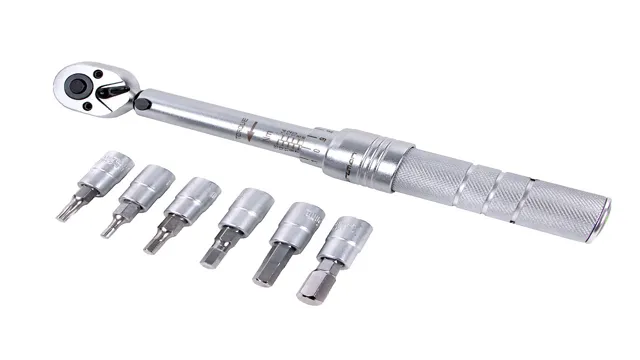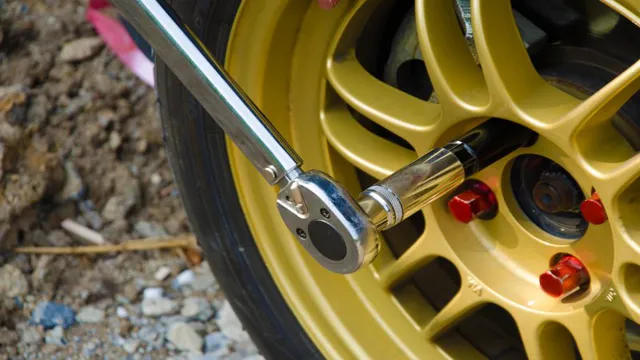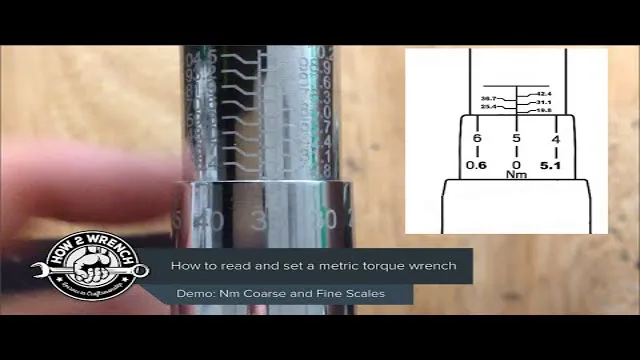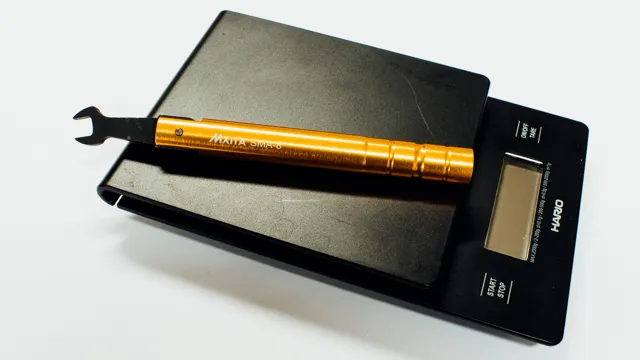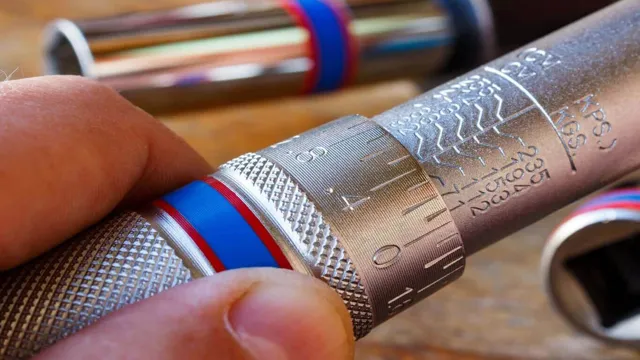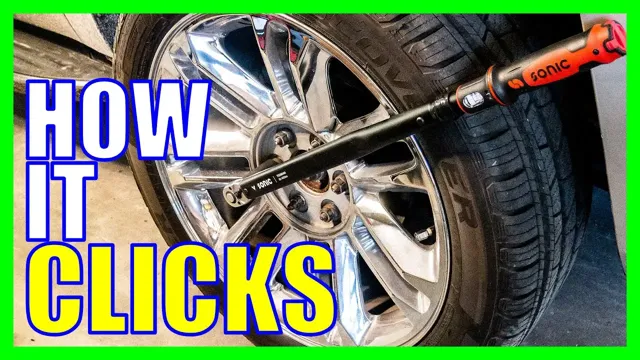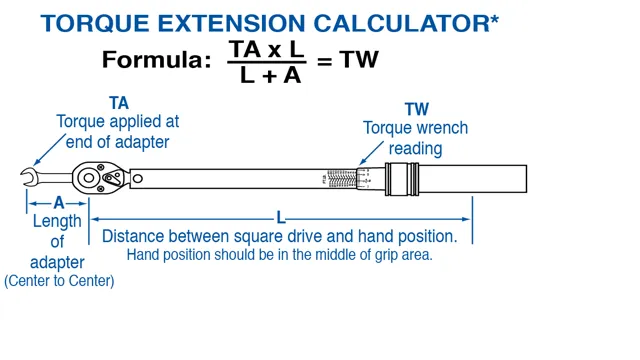How to Guess Torque without Torque Wrench: A Beginner’s Guide
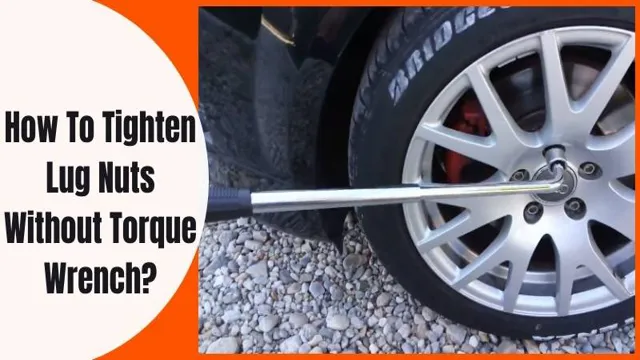
Have you ever found yourself in a situation where you needed to tighten or loosen a bolt but didn’t have a torque wrench handy? Don’t worry, there are ways to guess the torque without a torque wrench. In this blog, we’ll share some tips and tricks that will help you estimate the right amount of force needed to tighten or loosen bolts. Imagine you’re trying to open a jar of pickles.
You know that if you apply too little force, it won’t open, and if you apply too much force, you might break the jar. The same is true for tightening or loosening bolts. Applying too little force will result in loose bolts that might cause safety hazards, while applying too much force may cause the bolt to snap or damage the equipment.
Guessing torque without a torque wrench requires some experience and knowledge about the materials and bolts you’re working with. It’s essential to understand the thread pitch, diameter, and pitch angle of the bolt to estimate the correct torque. We’ll delve into these details in this blog and share some practical tips that will help you become more confident in your guesswork.
While using a torque wrench is undoubtedly the most accurate way to tighten or loosen bolts, knowing how to guess torque without a wrench can come in handy in emergency situations. So, let’s get started and see how you can put your guesswork skills to good use.
What is Torque?
Torque is the term used to describe the twisting force applied to an object in order to rotate it around an axis. It is a crucial term when it comes to working with fasteners such as bolts, nuts, and screws. However, not everyone has access to a torque wrench.
So how do you guess the torque without one? The answer is to use your intuition and a bit of experience. It’s important to note that guessing torque without a torque wrench is not a precise method and may not always yield the desired results. However, you can estimate torque by using a wrench and estimating the amount of force you apply.
By paying attention to how much effort it takes to tighten the fastener, you can sense whether or not you are applying enough torque. Another way to estimate torque is to use your hands to tighten fasteners gradually, adding additional force until you feel a slight resistance. It’s all about understanding the feel of tightening and being able to recognize when a fastener is tight enough.
While this method may not be as precise as using a torque wrench, it can work in a pinch.
Definition of torque, importance of proper torque
Torque is a measure of rotational force – specifically how much a force applied to an object will cause it to rotate around an axis. In simpler terms, it’s how much oomph it takes to twist something. It’s an important concept in physics and mechanics, and it has numerous practical applications.
For example, in the automotive industry, proper torque is crucial for ensuring that nuts, bolts and other fasteners are tightened correctly to avoid potential safety hazards. Similarly, in the construction industry, proper torque is important for ensuring that various types of equipment are assembled correctly and will function as expected. A lack of proper torque can cause problems ranging from damaged equipment to injuries or accidents.
If you’re ever working on a project that involves fasteners or rotating machinery, it’s essential that you understand the importance of torque and take the time to ensure that everything is tightened correctly.
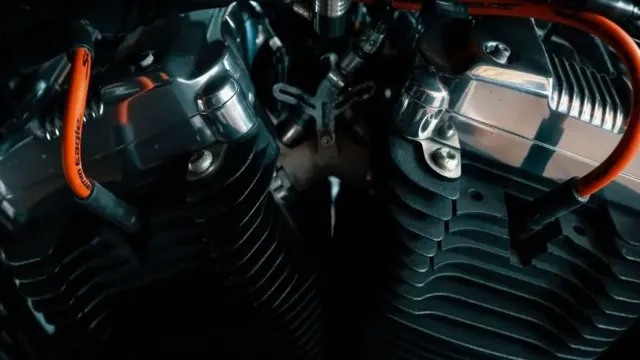
Factors Affecting Torque
Guessing torque without a torque wrench can be challenging, but it can still be done with reasonable accuracy. Understanding the factors that affect torque is the key to making an educated guess. Several factors come into play, including the size of the bolt or nut, the type of material being fastened, and the lubrication used.
Larger bolts with coarser threads generally require more torque than smaller ones with finer threads, while softer materials require less torque than harder ones. Lubrication can also affect torque, as an absence of it can lead to over-tightening and the presence of too much can cause under-tightening. By taking these factors into account, you can make a more informed guess at how much torque is required, but it’s important to remember that this is still just an estimate, and using a torque wrench is the only way to ensure precise and accurate torque values.
Material properties, thread pitch, lubrication, bolt diameter and length
Torque When it comes to mechanical systems, torque plays a crucial role. Several factors affect the amount of torque required to tighten a bolt or fastener. The material properties of the bolt and its mating surface are among the most critical factors.
A bolt made of a softer material, for instance, may require less torque than a bolt made of a harder material. Thread pitch is another important factor. The coarser the thread, the more force is needed to turn the bolt.
The bolt diameter and length also impact the torque needed, whereby thicker and longer bolts require more force. Lubrication is also vital in minimizing the torque needed to tighten bolts. Lubrication reduces the friction between the bolt and mating surface, allowing for easier turning.
In conclusion, understanding the factors that affect torque enables us to make informed decisions about bolt tightening.
Using your Hands
If you don’t have a torque wrench on hand but need to estimate the torque required for a certain task, there are a few tricks you can try. One popular method is to use your hands to gauge the tightness of a bolt or nut. Start by tightening the fastener with your fingers until it feels snug.
Then, use a wrench to turn it an additional quarter-turn. If the fastener feels tight and secure, you’ve probably reached the right torque level. Another approach is to use a visual indicator, such as a paint mark or scratch, to track how far you’ve turned the fastener.
If you know the bolt’s or nut’s thread pitch, you can estimate the torque based on the angle of rotation. Keep in mind that these methods are not as accurate as using a torque wrench, so use them with caution and at your own risk.
Estimating torque based on a specific range of resistance on a bolt or nut
Estimating torque based on a specific range of resistance on a bolt or nut can be a tricky task, especially if you’re relying solely on your hands. When it comes to tightening or loosening a bolt or nut, the amount of torque needed can vary depending on the material and size of the fastener. But if you don’t have access to a torque wrench, there are still some ways you can estimate the amount of torque you’re applying.
One method is to use your fingers as a gauge. By tightening the bolt or nut with your fingers until you feel a certain level of resistance, you can estimate roughly how much torque you’re applying. But keep in mind that this method can be imprecise, and you’ll need to have a good sense of touch and experience to get it right.
In other words, it takes practice and patience to become skilled in estimating torque with your hands.
Use a Scale
If you need to guess torque without a torque wrench, using a scale can be a helpful alternative. First, make sure the bolt you’re working with is secure and won’t move. Next, attach the scale to the bolt with a clamp and mark the scale at the point where the bolt attaches.
Gradually apply force to the scale until it starts to move. Once the scale starts to move, note the weight on the scale and compare it to the weight you would expect to see for the specific torque you’re aiming for. This will give you an estimate of the torque being applied to the bolt.
Keep in mind, however, that this method is not as accurate as using a torque wrench. Additionally, be sure to check the manufacturer’s specifications for the appropriate torque range for your specific bolt to ensure you’re not over or under-torquing it. With some practice, this method can be useful for simple jobs, but for more complex and sensitive tasks, a torque wrench is a more reliable tool.
Using a fish scale or bathroom scale to measure torque
If you’re an avid DIYer or a car enthusiast, you’ve probably wondered about the torque of your car’s bolts. Fortunately, measuring torque doesn’t require expensive equipment or complicated tools. You can use a fish scale or a bathroom scale to measure torque at home! First, attach a socket to a regular wrench, then place the fish scale or bathroom scale under the wrench’s handle.
Turn the wrench until it reaches the desired torque, and voila! The scale will indicate the amount of force applied, allowing you to measure the torque accurately. This method may not be as precise as using a torque wrench, but it is still an effective way to get a rough estimate of your car’s bolt torque. So the next time you need to check your car’s torque, grab your trusty bathroom scale and get to work!
Calibrated Tools
If you don’t have a torque wrench, guessing torque can be tricky. However, it’s not impossible if you have the right calibrated tools. An adapter or converter can help you measure torque without a torque wrench.
These tools allow you to use a socket wrench or breaker bar and provide the necessary torque measurement. Additionally, you can also use a torque stick, which is a more affordable option. The stick’s color code can be used to estimate the torque applied.
For instance, if a red torque stick is used, it suggests 120-150lbs of torque. Keep in mind, to achieve the desired level of accuracy, ensure that you get calibrated tools from reputable brands. While guessing torque without a torque wrench is not ideal, with the right calibrated tools, you can still achieve accurate results.
Using a torque conversion chart to calculate torque based on bolt size and grade
If you want to ensure that your bolts are tightened to the proper torque, a torque conversion chart can be extremely helpful. By inputting the bolt size and grade, you can easily determine the recommended torque level. However, it’s important to keep in mind that these charts aren’t always 100% accurate.
That’s where calibrated tools come in. These tools have been specifically designed to accurately measure torque, and they can help ensure that your bolts are tightened to the correct level. It’s always a good idea to use calibrated tools if you’re working on a project that requires precise torque measurements, as this can help prevent issues down the line.
So next time you’re working on a project that requires torquing bolts, make sure to consult a torque conversion chart and use calibrated tools to get the job done right.
Conclusion
Remember, guessing torque without a torque wrench is like trying to hit a bullseye with your eyes closed. However, if you have some experience with tightening bolts, you can use a combination of feel, sound, and previous knowledge to make an educated guess. So, next time you’re stuck without a torque wrench, don’t panic – just trust your instincts and tighten that bolt with confidence!”
Importance of proper torque, using calibrated tools for accuracy
Calibrated tools are essential for accurate torque measurement. Proper torque is critical for ensuring the safety and reliability of machinery and equipment. Calibrated tools, such as torque wrenches, are designed to provide precise readings and prevent over-tightening or under-tightening of bolts, nuts, and other components.
Using non-calibrated tools can result in inaccurate torque measurements which may lead to equipment failure, safety hazards, and costly repairs. It’s like trying to build a puzzle without a reference picture; you may get close, but ultimately, something will be off. Therefore, it’s essential to use calibrated tools to get accurate readings and ensure proper torque.
Always remember to check and calibrate your tools regularly to maintain their accuracy and prevent any costly mistakes.
FAQs
What are the common symptoms of a lack of torque in a car?
Common symptoms include difficulty accelerating, poor fuel efficiency, and a decrease in overall power.
Is it possible to guess torque measurements without a torque wrench?
Yes, it is possible to make an educated guess based on the size and grade of the fastener being used.
How can I ensure proper torque without a torque wrench?
One method is to tighten the fastener until it is snug, then use a quarter-turn to finish tightening.
Can over-tightening a fastener cause damage to my car?
Yes, over-tightening can lead to stripped threads, broken bolts, and even damage to the surrounding components.
How often should I check the torque on my car’s fasteners?
It is recommended to check torque after any repairs or modifications, and periodically as part of routine maintenance.
What is the difference between torque and tension?
Torque is the measure of rotational force, while tension is the measure of a stretching force on a threaded fastener.
Can I use a torque wrench for non-automotive applications?
Yes, torque wrenches are useful for any application where precise tightening is required, such as in construction or assembling machinery.

